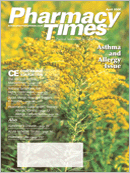Publication
Article
Pharmacy Times
Metronidazole and Metformin Prone to Mix-ups
Author(s):
Problem
The Institute for Safe MedicationPractices (ISMP) has received numerousreports of mix-ups involving metronidazoleand metformin. In one report, a familypractice physician in a communityhealth center prescribed metformin 500mg bid to a newly diagnosed patient withdiabetes who did not speak English.When the patient returned to his physician'soffice a few months later, hebrought his medications with him, asrequested. His physician quickly noticedthat metformin was missing. Instead, thepatient had a prescription bottle labeledas metronidazole, with directions to take500 mg twice a day. The prescription hadbeen refilled several times. Luckily, thepatient's diabetes had remained stable,and he seemed to suffer no adverseeffects from 2 months of unnecessaryantimicrobial therapy.
The physician notified the pharmacy ofthe error and asked the pharmacist tocheck the original prescription. It hadbeen written clearly and correctly formetformin. Upon further investigation,the pharmacist found that the computerentry screen for selecting these medicationsincluded "METF" (for metformin)and "METR" (for metronidazole). Apparently,one of the pharmacy staff membershad entered "MET" and selectedmetronidazole instead of metformin.
In another community pharmacy, thesame mix-up happened twice, on successivedays. In one case, metformin wasinitially dispensed correctly, even thoughthe prescription had been entered intothe computer incorrectly as metronidazole—again, when the wrong mnemonicwas chosen. The pharmacist who filledthe prescription clearly understood thatthe physician had prescribed metformin,so he filled the prescription accordingly.He failed to notice the order entry error,however, because he did not comparethe prescription vial label with the manufacturer'slabel. Unfortunately, the initialorder entry error led to subsequent erroneousrefills of metronidazole, as statedon the pharmacy label.
In the second mix-up at this pharmacy,bulk containers of the medication wereavailable from the same manufacturer,both with similar highly stylized labels.Thus, confirmation bias contributed toselection of the wrong drug. After reading"MET" and "500" on the manufacturer'slabel, the staff member believed thathe had the correct drug.
Unit-dose tablets also can be problematic,because the label information is verysmall and contains bar codes, adding totheir similar appearance. In a hospitalpharmacy, unit-dose tablets of metronidazole500 mg and metformin ER 500mg were accidentally mixed together inthe metronidazole storage bin. This errorresulted in dispensing metformin insteadof metronidazole. Fortunately, a nurse recognizedthe error before giving a patientthe wrong medication. Both were genericproducts, although the brand name versionsof metformin (Glucophage) andmetronidazole (Flagyl) also are available.
Safe Practice Recommendations
Mix-ups involving metronidazole andmetformin could be serious, consideringthe different indications and the potentialfor drug interactions. Prescribers shouldbe sure that patients are aware of themedication's purpose and should includethis purpose on the prescription. Considerprogramming computer order entryscreens to display the specific brandnames along with the generic nameswhenever the "MET" stem is used as amnemonic, or apply tall-man lettering tothe drug names. In addition, pharmacistscould consider writing the correspondingbrand name on generic manufacturers'containers. Purchase these medicationsfrom different manufacturers, and underlineor highlight the unique letter charactersin the drug names.
During the dispensing process, drugnames listed on written prescriptionsshould be matched with pharmacy labelsand manufacturers' products. As an additionalcheck, match the National DrugCode number of the product with thatwhich appears in the computer databaseand subsequently on the printed pharmacylabel.
Verify the purpose of the medicationwith the patient. Because metformin isused to treat a chronic condition, andmetronidazole is more likely to be usedfor an acute condition, outpatient refillsfor metronidazole are less common and,therefore, deserve a second look. We atISMP have asked the FDA to add thesedrugs to the list of nonproprietary namesthat would benefit from the use of tallmanletters.
Dr. Kelly is the editor of ISMPMedication Safety Alert!Community/Ambulatory CareEdition.
Report Medication Errors
The reports described here were receivedthrough the USP Medication Errors ReportingProgram, which is presented in cooperationwith the Institute for Safe Medication Practices(ISMP). ISMP is a nonprofit organization whosemission is to understand the causes of medicationerrors and to provide time-critical errorreductionstrategies to the health care community,policy makers, and the public. Throughoutthis series, the underlying system causes ofmedication errors will be presented to helpreaders identify system changes that canstrengthen the safety of their operation.If you have encountered medicationerrors and would like to report them, youmay call ISMP at 800-324-5723 (800-FAILSAFE)or USP at 800-233-7767 (800-23-ERROR). ISMP's Web address is www.ismp.org.







